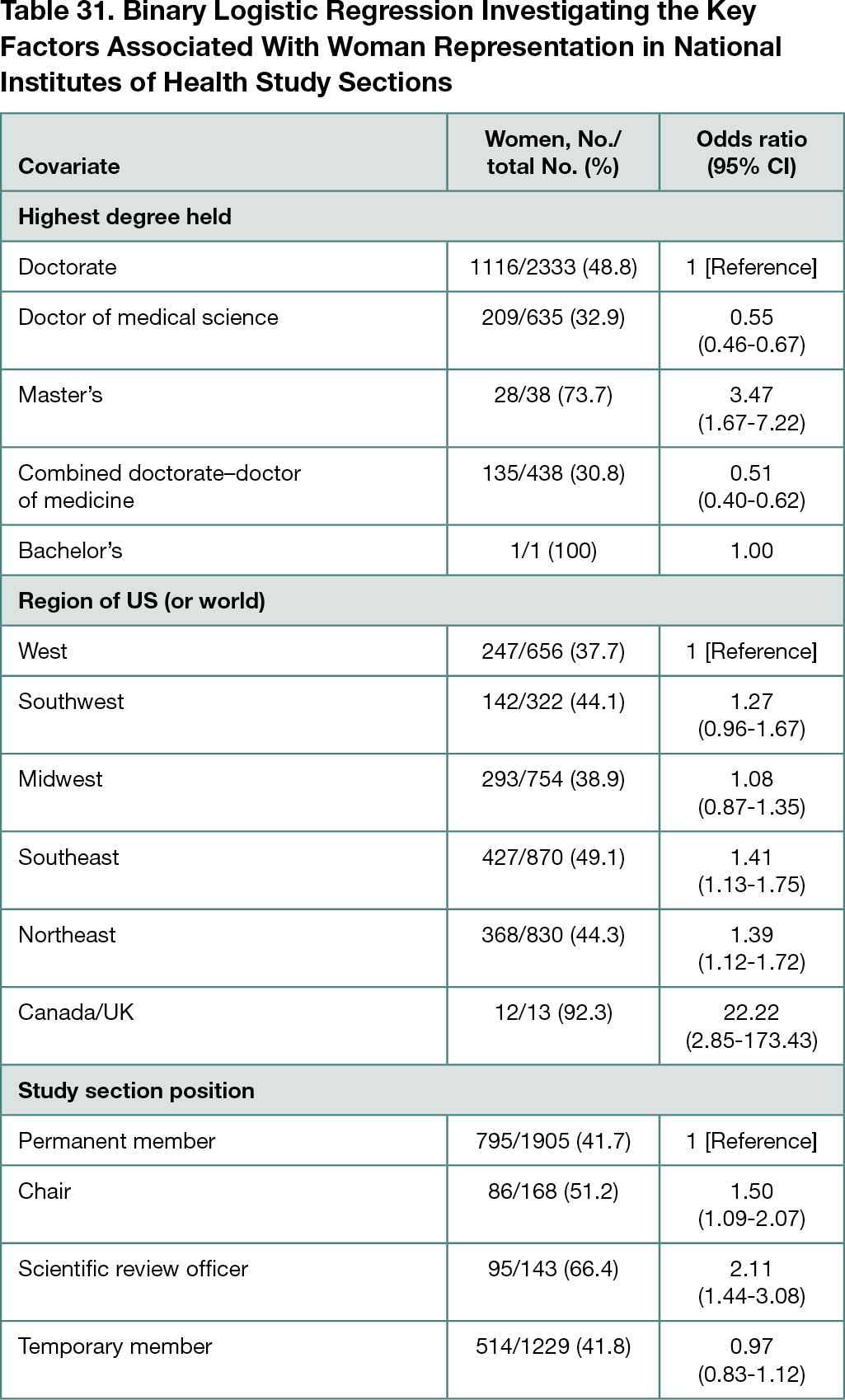Abstract
Evaluation of Women Representation in National Institutes of Health Study Sections
Cole Wayant,1 Matt Vassar2
Objective
To study the representation of women scientists and physicians in National Institutes of Health (NIH) study sections.
Design
In this cross-sectional study, a stratified random sample composed of 15 study sections representing 15 separate NIH institutes and centers was extracted. Rosters from each study section meeting in the years 2011, 2016, and 2021 were downloaded from the NIH Scientific Review Group Roster Index. For each NIH reviewer, professional websites were searched to identify gender identity descriptions. If these descriptions could not be found, genderize.io (Demografix ApS) was used to determine the probability of a name belonging to a man or woman. Names with probability values less than .60 were excluded. The following data points were extracted from each roster: (1) highest academic degree, (2) meeting date, (3) academic rank, (4) type of member (permanent, temporary, chair, scientific review officer, other), (5) institution, and (6) geographic region.1 Stata version 16.1 was used to conduct χ² tests for 2-group comparisons and a multivariate, binary logistic regression to examine the association of the key factors with the likelihood of being a woman NIH reviewer.
Results
A total of 3478 total reviewers from 15 study sections in 2011, 2016, and 2021 were identified. Overall, there were 1508 women reviewers (44.6%) and 1970 men reviewers (55.4%). After removing duplicates, there were 1901 unique reviewers, of which 802 (42.2%) were women and 1099 (57.8%) were men. There was no significant difference in the proportion of total and unique women reviewers (P = .41). The proportion of women nominally increased each year from 2011 (476 of 1165 [40.9%]) to 2016 (472 of 1123 [42.0%]) to 2021 (560 of 1109 [47.1%]). Multiple regression indicated that women reviewers were less likely to hold medical science degrees. Women were more likely to be from the Southeast and Northeast regions of the US and hold the position of Chair or Scientific Review Officer in the study section (Table 31).
Conclusions
This study examining women representation in NIH study sections in 2011, 2016, and 2021 indicates that the proportion of women reviewers increased over time but that several key improvements could be made to further increase representation. In particular, women physicians and physician-scientists were underrepresented in our study. Bias toward women in medicine has been extensively described previously,2,3 and efforts to identify or overcome limitations to women physician recruitment to NIH study sections should be undertaken. These findings significantly expand results from a previous study that evaluated representation of women on NIH panels for a single year. These findings are limited by use of self-reported gender pronouns and the probability of a name belonging to a man or woman when pronouns were not reported. In addition, the random sampling may have introduced bias since some institutes and centers have more study sections than others.
References
1. National Geographic Society. United States regions. Accessed June 5, 2022 https://education.nationalgeographic.org/resource/united-states-regions
2. Hansen M, Schoonover A, Skarica B, Harrod T, Bahr N, Guise JM. Implicit gender bias among US resident physicians. BMC Med Educ. 2019;19:396. doi:10.1186/s12909-019-1818-1
3. Newman EA, Waljee J, Dimick JB, Mulholland MW. Eliminating institutional barriers to career advancement for diverse faculty in academic surgery. Ann Surg. 2019;270(1):23-25. doi:10.1097/SLA.0000000000003273
1Baylor College of Medicine, Department of Internal Medicine, Houston, TX, USA, cole.wayant@gmail.com; 2Oklahoma State University Center for Health Sciences, Department of Psychiatry and Behavioral Sciences, Tulsa, OK, USA
Conflict of Interest Disclosures
Matt Vassar has received funding from the National Institute on Drug Abuse, the National Institute on Alcohol Abuse and Alcoholism, the US Office of Research Integrity, Oklahoma Center for Advancement of Science and Technology, and internal grants from Oklahoma State University Center for Health Sciences.

